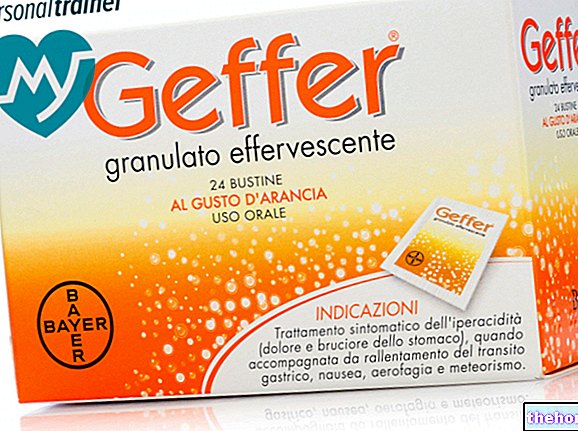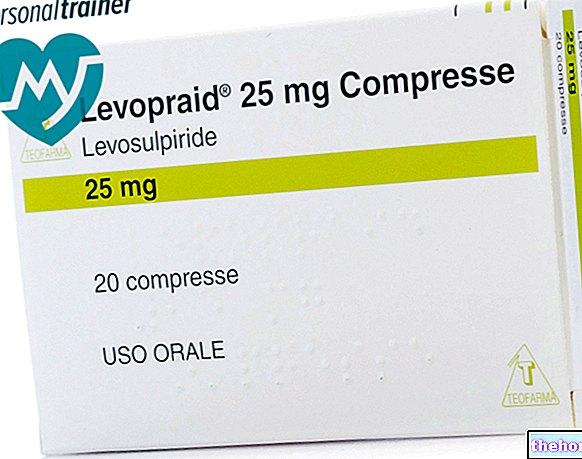Active ingredients: Mometasone (Mometasone Furoate)
NASONEX 50 MICROGRAMS / DISPENSING, NASAL SPRAY, SUSPENSION
Indications Why is Nasonex used? What is it for?
What is Nasonex?
Nasonex Nasal Spray contains mometasone furoate which belongs to a group of medicines called corticosteroids. Mometasone furoate should not be confused with "anabolic" steroids that some athletes misuse and taken in tablet or injectable form. Small amounts of mometasone furoate sprayed into the nose can help relieve inflammation, sneezing, itching, stuffy or runny nose conditions.
What is Nasonex used for?
Nasonex is used in adults and children from 6 years of age to treat the symptoms of hay fever (also called seasonal allergic rhinitis) and perennial rhinitis.
In adults from 18 years of age, Nasonex is also used in the treatment of nasal polyposis.
What is hay fever and perennial rhinitis?
Hay fever, which appears at certain times of the year, is an allergic reaction caused by the inhalation of pollen from trees, grass, weeds and also mold spores and fungal spores. Perennial rhinitis is present all over the place. "year and symptoms can be caused by sensitivity to a variety of elements, including house dust mite, animal hair (or dandruff), feathers and certain foods. These allergies cause a runny nose and sneezing and a swelling of the nasal mucosa causing a feeling of obstruction. Nasonex reduces swelling and nasal irritation and relieves sneezing, itching, stuffy or runny nose conditions.
What are nasal polyps?
Nasal polyps are small growths on the nasal mucosa and usually affect both nostrils. The main symptom is a feeling of constipation which can affect nasal breathing. Runny nose, a sensation of fluid running down the back of the throat, as well as loss of taste and smell may also occur. Nasonex reduces inflammation of the nose by causing gradual narrowing of the polyps.
Contraindications When Nasonex should not be used
Do not use Nasonex
- if you are allergic (hypersensitive) to mometasone furoate or any of the other ingredients of Nasonex
- if you have a nasal infection. You must wait for the infection to clear before you start using the nasal spray.
- if you have recently had nose surgery or have injured your nose. You will need to wait for healing before you start using the nasal spray.
Precautions for use What you need to know before taking Nasonex
Take special care with Nasonex
- if you have or have suffered from tuberculosis
- if you have a "herpes simplex (virus) infection of the eye"
- if you have any other type of infection
- if you are taking other corticosteroids, either by mouth or by injection
- if you have cystic fibrosis.
While using Nasonex, avoid contact with anyone with measles or chickenpox. Tell your doctor if you come into contact with anyone suffering from these infections.
Interactions Which drugs or foods may change the effect of Nasonex
If you are taking other corticosteroid medicines for allergy treatment, either by mouth or by injection, your doctor may advise you to stop these when you start using Nasonex. When you stop taking oral or injectable corticosteroids, some people suffer from side effects such as joint or muscle pain, weakness and depression. In this case it is necessary to inform your doctor who will advise you on the use of the nasal spray. You may seem to develop other allergies, such as itching, watery eyes or red and itchy patches on the skin. Consult your doctor if you are concerned about these effects. .
Warnings It is important to know that:
Pregnancy and breastfeeding
If you are pregnant you should not take Nasonex unless your doctor tells you to. If you are pregnant consult your doctor before taking any medicine.
If you are breastfeeding you should not take Nasonex unless your doctor tells you to.
Dose, Method and Time of Administration How to use Nasonex: Posology
Always use Nasonex exactly as your doctor has advised you. If in doubt, consult your doctor or pharmacist. Do not use higher or more frequent doses or for longer than prescribed by your doctor.
- Hay fever and perennial rhinitis
Adults and children over 12 years of age
The common dose is 2 sprays into each nostril once a day for adults (including the elderly) and children over 12 years of age.
- Once your symptoms are under control, your doctor may recommend that you give one spray into each nostril once a day.
- If you do not feel any improvement, consult your doctor who may prescribe you to increase the dose to a maximum of 4 sprays in each nostril once a day per day. Once your symptoms are under control, your doctor may tell you to reduce the dose to 2 sprays in each nostril once a day.
Children from 6 to 11 years of age
The common dose is 1 spray into each nostril once a day.
Long-term use of high doses of nasal steroids may cause growth retardation in children. Your doctor will monitor your child's height at regular intervals during treatment and may reduce the dose if this occurs. .
If you suffer from severe hay fever your doctor may advise you to start using Nasonex two to four weeks before the start of the pollen season: this will help prevent hay fever symptoms from appearing. Your doctor may recommend it. "use of other medicines in combination with Nasonex, especially in the presence of itchy or irritated eyes. By the end of the pollen season, hay fever symptoms may have improved and treatment may no longer be necessary.
- Nasal polyposis
The common starting dose for adults 18 years of age and older is 2 sprays into each nostril once a day.
- If after 5 or 6 weeks your symptoms are still not controlled, your doctor may increase the dose to 2 sprays in each nostril 2 times a day. When your symptoms are under control, your doctor should ask you to reduce the dose to the minimum effective for symptom control.
- If your symptoms do not improve after 5 or 6 weeks of twice daily administration, you should contact your doctor to check the availability of other treatments to replace Nasonex.
How to prepare the nasal spray for use
Nasonex Nasal Spray is equipped with a dust cap, which protects the vaporizer and keeps it clean. Remember to remove it before using the spray and reposition it after use. If you are using the spray for the first time you will need to prime the pump 10 times until you see an even jet:
- Gently shake the container
- Place your index and middle fingers on either side of the vaporizer, your thumb under the base of the container. Do not pierce the nasal applicator.
- Point the vaporizer away and press with your fingers to charge the spray.
If you have not used the spray for 14 days or more, you will need to refill the pump 2 times until you see an even jet.
With a normal dose of two sprays in each nostril once a day for the treatment of hay fever, perennial rhinitis and nasal polyposis, this container provides sufficient doses for 15 days.
How to use the nasal spray
- Gently shake the bottle and remove the dust cap. (Figure 1)
- Gently blow your nose.
- Close one nostril and insert the vaporizer into the other as shown. (Figure 2) Tilt your head slightly forward, keeping the container straight.
- Begin to breathe in gently or slowly through the nose, administer a squirt of the spray into the nose by pressing ONCE with your fingers.
- Breathe out through your mouth. Repeat step 4 to inhale a second spray into the same nostril.
- Remove the vaporizer from this nostril and exhale through your mouth.
- Repeat steps 3 to 6 for the other nostril. (Figure 3)
After using the product, carefully clean the vaporizer with a clean tissue or cloth and replace the dust cap.
How to clean the nasal spray
It is important to clean the nasal spray regularly otherwise it may not work properly. Remove the dust cap and gently remove the vaporizer. Wash the vaporizer and the dust cap, then rinse under running water. Do not try to unblock the nasal applicator by inserting a pin or other pointed object as this will damage the nasal applicator and will not allow you to have the right dosage of the medicine. Dry in a warm place. Put the vaporizer back into the container and replace the dust cap. The spray needs to be refilled with at least 2 sprays on first use after cleaning.
Overdose What to do if you have taken too much Nasonex
If you take more Nasonex than you should
Tell your doctor if you have accidentally taken more than you should.
Prolonged use of high doses of steroids can rarely affect the levels of some hormones. In children, this effect can affect growth and development.
If you forget to take Nasonex
If you forget to take the nasal spray at the right time, take it as soon as you remember, then continue as usual. Do not take a double dose to make up for the forgotten one.
If you stop taking Nasonex
In some patients, symptom relief will occur 12 hours after the first dose of Nasonex; however, full treatment benefit may not appear until two days after the first administration. It is very important that you use the nasal spray regularly. Do not stop treatment, even if you feel better, until your doctor tells you to.
For further questions regarding the use of this product, ask your doctor or pharmacist.
Side Effects What are the side effects of Nasonex
Like all medicines, Nasonex can cause side effects, although not everybody gets them.
Rarely, immediate hypersensitivity (allergic) reactions may occur after use of this product. Very rarely these reactions can be serious. Contact your doctor immediately if breathing becomes labored or difficult.
In rare cases, treatment with corticosteroid nasal sprays, such as NASONEX, has resulted in increased eye pressure (glaucoma) and / or cataracts, causing visual disturbances and damage to the part in the nose that separates the nostrils. Contact your doctor if you experience any of these side effects. When nasal spray corticosteroids are used in high doses for long periods of time, side effects may very rarely occur due to the drug being absorbed into the body.
Other side effects
Most people have no problems with using the nasal spray. However, some after using Nasonex or other corticosteroid nasal sprays may observe:
- headache,
- sneezing,
- nose bleeding,
- pain in the nose or throat,
- very rarely alterations of taste and smell.
Children
When used in high dosages and for prolonged periods, nasal sprays can cause some side effects, such as growth retardation in children. It is therefore recommended to monitor height in children who use prolonged use of nasal corticosteroids. If this effect occurs, their doctor should be informed.
Nasonex contains benzalkonium chloride which can cause nasal irritation.
If any of the side effects gets serious, or if you notice any side effects not listed in this leaflet, please tell your doctor or pharmacist.
Expiry and Retention
- Keep Nasonex out of the reach and sight of children.
- Do not store the nasal spray above 25 ° C. Do not freeze.
- Do not use Nasonex after the expiry date which is stated on the bottle and carton after EXP. The expiry date refers to the last day of that month.
- The nasal spray should be used within 2 months of first opening the container.
Medicines should not be disposed of via wastewater or household waste. Ask your pharmacist how to throw away medicines you no longer use. This will help protect the environment.
Composition and pharmaceutical form
What Nasonex contains
- The active ingredient is mometasone furoate. Each spray contains 50 micrograms of mometasone furoate as monohydrate.
- The other ingredients are dispersible cellulose, glycerol, sodium citrate, citric acid monohydrate, polysorbate 80, benzalkonium chloride, purified water.
What Nasonex looks like and contents of the pack
Nasonex is a nasal spray, suspension.
Each bottle contains 60 sprays.
The bottles are supplied in individual packs.
Source Package Leaflet: AIFA (Italian Medicines Agency). Content published in January 2016. The information present may not be up-to-date.
To have access to the most up-to-date version, it is advisable to access the AIFA (Italian Medicines Agency) website. Disclaimer and useful information.
01.0 NAME OF THE MEDICINAL PRODUCT
NASONEX 50 mcg / NASAL SPRAY DISPENSING, SUSPENSION
02.0 QUALITATIVE AND QUANTITATIVE COMPOSITION
Mometasone furoate (as monohydrate) 50 mcg / actuation.
This medicinal product contains 0.2 mg of benzalkonium chloride per gram.
For the full list of excipients, see section 6.1.
03.0 PHARMACEUTICAL FORM
Nasal spray, suspension.
Suspension in white - opaque off-white color.
04.0 CLINICAL INFORMATION
04.1 Therapeutic indications
NASONEX nasal spray is indicated for the treatment of symptoms of seasonal or perennial allergic rhinitis in adults and children from 12 years of age.
NASONEX Nasal Spray is also indicated in the treatment of symptoms of seasonal or perennial allergic rhinitis in children aged 6 to 11 years.
In patients with a history of moderate to severe symptoms of seasonal allergic rhinitis, prophylactic treatment with NASONEX Nasal Spray can be started up to four weeks before the expected start of the pollen season.
NASONEX Nasal Spray is indicated for the treatment of nasal polyps in adult patients aged 18 years and over.
04.2 Posology and method of administration
After an initial priming of the NASONEX Nasal Spray pump (actuate 10 times, until a uniform jet is observed), each delivery releases approximately 100 mg of suspension containing mometasone furoate monohydrate equivalent to 50 mcg of mometasone furoate. If the spray pump is not used for 14 days or more, it must be refilled with 2 sprays until an even spray is observed before the next use.
Seasonal or perennial allergic rhinitis
Adults (including geriatric patients) and children from 12 years of age: The usual recommended dose is two puffs (50 mcg / puff) into each nostril once a day (total dose 200 mcg). Once symptoms are controlled, dose reduction to one puff in each nostril (total dose 100 mcg) may be effective for maintenance.
If symptoms are inadequately controlled, the dose can be increased to a maximum daily dose of four puffs in each nostril once daily (total dose 400 mcg). Dose reduction is recommended once symptom control is achieved.
Children between the ages of 6 and 11: The usual recommended dose is one puff (50 mcg / puff) into each nostril once a day (total dose 100 mcg).
NASONEX Nasal Spray has shown onset of clinically significant activity within 12 hours of the first dose in some patients with seasonal allergic rhinitis; however, a full treatment benefit may not be achieved within the first 48 hours. Therefore the patient should continue treatment. regular use to obtain full therapeutic benefit.
Nasal polyposis
The commonly recommended starting dosage for polyposis is two puffs (50 mcg / puff) into each nostril once daily (for a total dose of 200 mcg). If symptoms are not adequately controlled after 5 or 6 weeks, the dosage can be increased to a daily dose of two puffs into each nostril twice daily (for a total dose of 400 mcg). Dosage should be reduced to the lowest dose at which effective symptom control is maintained. Alternative therapies should be considered if symptom improvement does not occur after 5 or 6 weeks of twice daily treatment.
The efficacy and safety studies of NASONEX Nasal Spray in the treatment of nasal polyposis lasted four months.
Before administering the first dose, shake the container well and operate the pump 10 times (until a uniform spray is obtained). If the vaporizer will not be used for 14 days or more, load the pump with 2 puffs until an even jet is observed. Shake the container well before each use. The bottle must be thrown away after making the number of deliveries indicated on the label or within 2 months after the first use.
04.3 Contraindications
Hypersensitivity to the active substance or to any of the excipients of NASONEX Nasal Spray.
NASONEX Nasal Spray should not be used in the case of untreated localized infections involving the nasal mucosa.
Due to the inhibitory effect of corticosteroids on wound healing, patients who have recently undergone nasal surgery or who have suffered trauma should not use a nasal corticosteroid until healing has occurred.
04.4 Special warnings and appropriate precautions for use
NASONEX Nasal Spray should be used with caution, or even not used, in patients with active or quiescent tuberculous infections of the respiratory tract or in the case of untreated fungal, bacterial, systemic viral infections or in the case of ocular herpes simplex.
After 12 months of treatment with NASONEX nasal spray there is no evidence of atrophy of the nasal mucosa; furthermore, mometasone furoate tends to restore the normal histological phenotype of the nasal mucosa. As with any long-term treatment, patients using NASONEX nasal spray for several months or more they should be examined periodically for possible changes in the nasal mucosa. If a localized "fungal infection in the nose or pharynx develops, discontinuation of NASONEX Nasal Spray therapy or appropriate treatment may be required. The persistence of a "nasopharyngeal irritation may be a" indication to discontinue NASONEX nasal spray.
Although NASONEX controls nasal symptoms in most patients, concomitant use of appropriate supplemental therapy can also relieve other symptoms, particularly ocular symptoms.
There is no evidence of suppression of the hypothalamic-pituitary-adrenal (HPA) axis following prolonged treatment with NASONEX nasal spray. However, those patients who switch from long-term administration of systemically active corticosteroids to NASONEX Nasal Spray require special attention. Withdrawal of systemic corticosteroids in these patients can lead to adrenal gland failure for a few months, until the HPA axis is restored. If these patients show signs and symptoms of adrenal insufficiency, administration of systemic corticosteroids should be resumed and other therapies and appropriate measures instituted.
When switching from systemic corticosteroids to NASONEX Nasal Spray, some patients may experience systemically active corticosteroid withdrawal symptoms (e.g. joint and / or muscle pain initially, fatigue and depression) despite remission of nasal symptoms, and these patients should be encouraged. to continue therapy with NASONEX nasal spray. This step can also bring to light pre-existing allergic conditions, such as allergic conjunctivitis and eczema, previously suppressed by systemic corticosteroid therapy.
The safety and efficacy of NASONEX have not been studied for the treatment of unilateral polyps, polyps associated with cystic fibrosis or polyps that completely obstruct the nasal passages.
Unilateral polyps that appear unusual or irregular, especially if ulcerative or bleeding, need to be further evaluated.
Patients treated with corticosteroids who are potentially immunosuppressed should be advised of the risk of exposure to certain infections (eg chicken pox, measles) and of the importance of seeking medical attention if such exposure occurs.
Following the use of intranasal corticosteroids, cases of nasal septal perforation or increased intraocular pressure have been reported very rarely.
The safety and efficacy of NASONEX Nasal Spray for the treatment of nasal polyposis have not been studied in children and adolescents below 18 years of age.
Systemic effects may occur with inhaled corticosteroids, particularly when prescribed in high doses for prolonged periods. These effects are less likely to occur than with oral corticosteroid treatment and may vary in individual patients and between different corticosteroid preparations.Possible systemic effects may include Cushing's syndrome, Cushingoid appearance, adrenal suppression, growth retardation in children and adolescents, cataracts, glaucoma and, more rarely, a range of psychological or behavioral effects including psychomotor hyperactivity, sleep disturbances, anxiety, depression or aggression (particularly in children).
It is recommended that the height of children on prolonged treatment with nasal corticosteroids is regularly monitored. If growth is slowed, therapy should be reviewed in order to reduce, if possible, the dose of the nasal corticosteroid to the minimum that allows effective symptom control. In addition, the patient should be advised to refer to a pediatrician.
Treatment with higher than recommended dosages may result in clinically significant suppression of the adrenal gland. If there is evidence that higher than recommended dosages should be used, additional systemic corticosteroid coverage should be considered during times of stress or elective surgery.
04.5 Interactions with other medicinal products and other forms of interaction
(For use with systemic corticosteroids, see section 4.4. Special warnings and precautions for use).
A clinical interaction study was conducted with loratadine. No interactions were observed.
04.6 Pregnancy and lactation
There are no adequate or well-controlled studies in pregnant women. As with other nasal preparations containing corticosteroids, NASONEX Nasal Spray should not be used during pregnancy or breastfeeding, unless the potential benefit to the mother justifies any potential risk to the mother, fetus or infant. Babies born to mothers. treated with corticosteroids during pregnancy should be carefully observed for possible hypoadrenalism.
04.7 Effects on ability to drive and use machines
You don't notice.
04.8 Undesirable effects
Treatment-related adverse events reported in clinical trials for allergic rhinitis in adult and adolescent patients are listed below (Table 1).
Epistaxis was generally self-limiting and mild in severity and appeared at a higher incidence than placebo (5%), but with a lower or comparable incidence than the control nasal corticosteroids studied (up to 15%). The incidence of all other effects was comparable to that of placebo.
In the pediatric population, the incidence of adverse events, such as epistaxis (6%), headache (3%), nasal irritation (2%) and sneezing (2%), was comparable to that with placebo.
In patients treated for nasal polyposis, the overall incidence of adverse events was comparable to placebo and similar to that observed in patients with allergic rhinitis. Treatment-related adverse events reported in ≥ 1% of patients during clinical trials for polyposis are listed below (Table 2).
In patients treated for acute rhinosinusitis, the incidence of epistaxis for NASONEX was 3.3% versus 2.6% for placebo and similar to that seen in patients treated for allergic rhinitis.
Rarely, immediate hypersensitivity reactions including bronchospasm and dyspnoea may occur after intranasal administration of mometasone furoate monohydrate. Very rarely, anaphylaxis and angioedema have been reported.
Cases of changes in taste and smell have been reported very rarely.
As with other intranasal corticosteroids, rare cases of nasal septal perforation have been reported.
Systemic nasal corticosteroid effects may occur, especially when prescribed at high doses for prolonged periods.
Rare cases of glaucoma, increased intraocular pressure and / or cataracts have been reported with the use of intranasal corticosteroids.
04.9 Overdose
Since the systemic bioavailability of NASONEX is sensitive with a lower limit of quantification of 0.25 pg / mL), overdose is unlikely to require therapy other than observation followed by initiation of the appropriate prescribed dosage. L "Inhalation or oral administration of excessive doses of corticosteroids can lead to suppression of HPA axis function."
05.0 PHARMACOLOGICAL PROPERTIES
05.1 Pharmacodynamic properties
Pharmacotherapeutic group: Decongestants and other nasal preparations for topical use - Corticosteroids, ATC code: R01AD09.
Mometasone furoate is a topical glucocorticoid with local anti-inflammatory properties at doses that are not systemically active.
It is likely that the mechanism of the anti-allergic and anti-inflammatory effects of mometasone furoate is mostly related to its ability to inhibit the release of the mediators of allergic reactions. Mometasone furoate significantly inhibits the release of leukotrienes from the leukocytes of allergic patients.
In cell cultures, mometasone furoate has shown high potency in inhibiting the synthesis and release of IL-1, IL-5, IL-6 and TNFα; it is also a potent inhibitor of leukotriene production. It is also an extremely potent inhibitor. Th2-mediated production of cytokines, IL-4 and IL-5, by CD4 + T cells.
In studies using the nasal antigen exposure technique, NASONEX nasal spray demonstrated anti-inflammatory activity in both early and late stages of allergic responses. This was demonstrated by the decrease (versus placebo) of histamine and eosinophilic activity. and by the reduction (against base values) of eosinophils, neutrophils and epithelial cell adhesion proteins.
In 28% of patients with seasonal allergic rhinitis, NASONEX Nasal Spray demonstrated the onset of clinically significant activity within 12 hours after the first dose. The median time (50%) to onset of symptom relief was 35.9 hours.
In two studies involving 1954 patients, Nasonex 200 micrograms nasal spray, administered twice daily, for a treatment period of 15 days (Study P02683 p pain / pressure / sensitivity of the face, sinus headache, rhinorrhea, post-nasal discharge and congestion / obstruction One arm of the study treated with amoxicillin 500 mg three times a day did not show significantly different results from placebo in reducing these symptoms of acute rhinosinusitis, again assessed through the MSS. The SNOT-20 Quality of Life Questionnaire (Sino-Nasal Outcome Test) showed significant benefit with 200 mcg mometasone furoate twice daily versus placebo (p = 0.047). Treatment duration greater than 15 days was not evaluated in acute rhinosinusitis.
In a placebo-controlled clinical study in pediatric patients (n = 49 / group), treated with NASONEX 100 mcg daily for one year, no reduction in growth rate was observed.
In the pediatric population aged 3 to 5 years, the available data on the safety and efficacy of NASONEX are limited and an appropriate range dosage. In a study conducted in 48 children aged 3 to 5 years, treated with mometasone furoate administered intranasally at a dose of 50, 100 or 200 mcg / day for 14 days, there was no significant difference in change from placebo. mean plasma cortisol level in response to the tetracosactrine stimulation test.
05.2 Pharmacokinetic properties
Mometasone furoate, administered as an aqueous nasal spray, has plasma systemic bioavailability using a sensitive assay with a lower limit of quantitation of 0.25 pg / mL. The mometasone furoate suspension is very poorly absorbed from the gastrointestinal tract and the small amount that can be swallowed and absorbed undergoes extensive first pass hepatic metabolism prior to excretion in the urine and bile.
05.3 Preclinical safety data
No toxicological effects related solely to exposure to mometasone furoate have been demonstrated. All observed effects are typical of this class of compounds and are related to exaggerated pharmacological effects of glucocorticoids.
Preclinical studies show that mometasone furoate lacks androgenic, antiandrogenic, estrogenic or antiestrogenic activity but, like other glucocorticoids, it exhibits some antiuterotrophic activity and delays vaginal dilation in animal models at high oral doses of 56 mg / kg / day and 280 mg / kg / day.
Like other glucocorticoids, mometasone furoate showed clastogenic potential at high concentrations in vitro. However, no mutagenic effect can be expected at appropriate therapeutic doses.
In reproductive function studies, mometasone furoate administered subcutaneously at a dose of 15 mcg / kg prolonged gestation and caused prolonged and difficult labor with a reduction in the survival of the offspring, in body weight or an increase in it. There was no effect on fertility.
Like other glucocorticoids, mometasone furoate is teratogenic in rodents and rabbits. Effects observed were umbilical hernia in rats, cleft palate in mice and gallbladder agenesis, umbilical hernia and curved forelegs in rabbits. In addition, there were reductions in maternal weight gain, effects on fetal growth (lower fetal body weight and / or delayed ossification) in rats, rabbits and mice, and reduced offspring survival in mice.
The potential carcinogenicity of inhaled mometasone furoate (aerosol with chloro-fluoro-carbide propellant and surfactant) at concentrations of 0.25 to 2.0 mcg / l was evaluated in 24-month studies in mice and rats. . Typical glucocorticoid-related effects were observed, including numerous non-neoplastic lesions. There was no statistically significant dose-response relationship for any of the tumor types.
06.0 PHARMACEUTICAL INFORMATION
06.1 Excipients
Dispersible cellulose BP 65 cps (microcrystalline cellulose and sodium carmellose)
Glycerol
Sodium citrate
Citric acid monohydrate
Polysorbate 80
Benzalkonium chloride
Purified water.
06.2 Incompatibility
Not relevant.
06.3 Period of validity
2 years.
Use within 2 months of first use.
06.4 Special precautions for storage
Do not store above 25 ° C. Do not freeze.
06.5 Nature of the immediate packaging and contents of the package
NASONEX nasal spray is contained in a white high density polyethylene bottle that contains 10 g (60 puffs) or 18 g (140 puffs) of product equipped with a polypropylene vaporizer with manual pump and metered delivery.
Packaging: 10 g, 1 bottle
18 g, 1, 2 or 3 bottles
Not all pack sizes may be marketed.
06.6 Instructions for use and handling
No special instructions.
07.0 MARKETING AUTHORIZATION HOLDER
MSD Italia S.r.l.
Via Vitorchiano, 151 - 00189 Rome
08.0 MARKETING AUTHORIZATION NUMBER
18 g pack - 140 puffs of 50 mcg / dispensing A.I.C. n. 033330010 / M
10 g pack - 60 puffs of 50 mcg / dispensing A.I.C. n. 033330022 / M
09.0 DATE OF FIRST AUTHORIZATION OR RENEWAL OF THE AUTHORIZATION
Pack of 18 g - December 11, 1997
10 g pack - June 13, 2000
Renewal of the authorization: 5 March 2008
10.0 DATE OF REVISION OF THE TEXT
March 2013























-nelle-carni-di-maiale.jpg)




